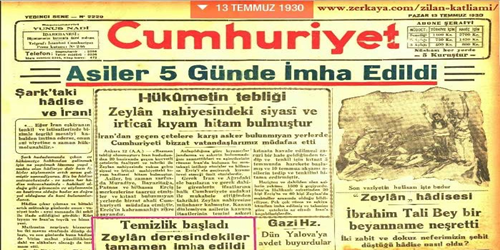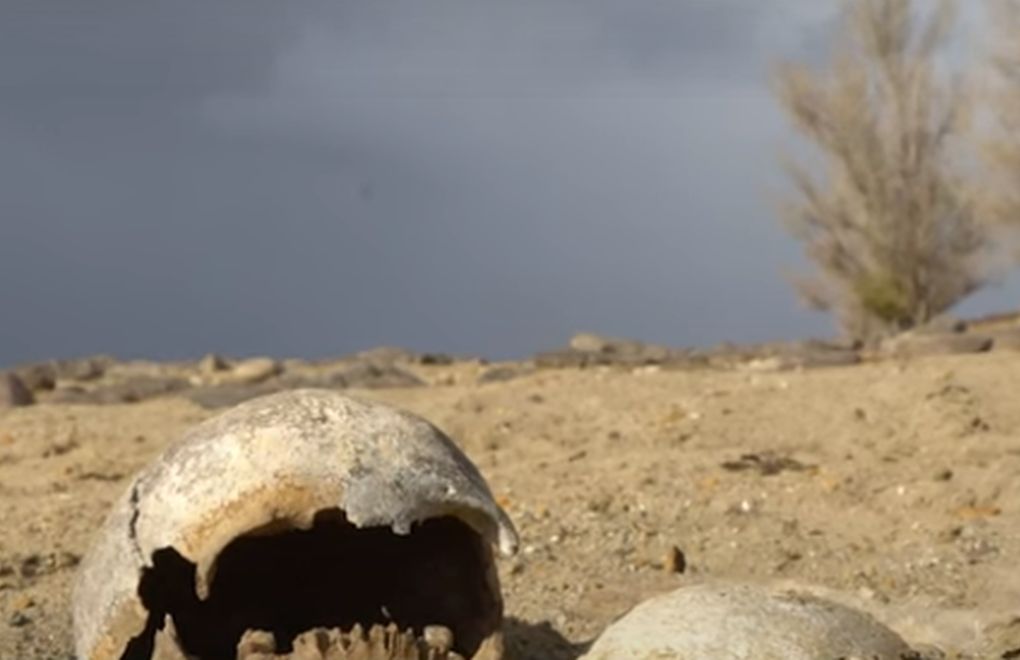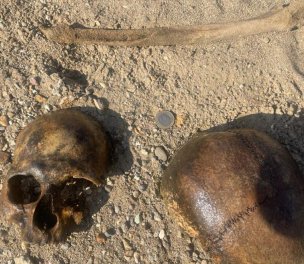Photo: Ajans 65
Click to read the article in Turkish (1) (2)
People's Democratic Party (HDP) Van MP Tayip Temel tabled a motion and requested Parliamentary Inquiry into the claims that human bones were coming ashore with the drop of the water level in the Koçköprü dam reservoir on Zilan river in Erciş, Van.
Ajans 65 had first reported the claim, with reference to Ali Kalçık, Chairperson of the Association for Protection of Environment and Historical Artifacts of Van (ÇEV-DER).
Kalçık told Ajans 65 that the dams in the region were constructed in order to wipe out the evidence remaining from the massacres in the region in the past and said, "What we see now is proving what we were trying to say for so many years."
The Koçköprü dam at a distance of 120 kilometers to the center of Van and ten kilometers to Erciş is fed by the rivers of Zilan. The dam was built over the old Ağaçören village between the years 1978-1992. The hydroelectric power plant over the dam which started to operate in 2020 retained water and the water level in the dam reservoir decreased.
Ajans 65 reported that human bones were coming ashore with the drop in the water level in the Koçköprü dam reservoir.
Motion for Parliamentary Inquiry
Tayip Temel of HDP requested in his motion that a parliamentary inquiry should be started in order for the bones to be examined, the results to be made public and the bones to be buried showing respect for human dignity.
In his motion, Temel said, "Most of the villages were burnt and emptied after the Zilan massacre in Erciş, Van. According to the official figures 15 thousand, but according to other sources and witnesses some more than 40 thousand people including women, children, and the old were killed on July 13, 1930, in Erciş, Van."
"Villages called Milk, Kunduk, Birhan, Bonizli, Sarkoy, Şorik, Pirneşin, Mirşud were wiped off the maps. Zilan region was declared a military forbidden zone and entering this region was prohibited for 20 years following the massacre.
"Zilan massacre was reported in Cumhuriyet newspaper which said, "The Zşlan river is full of dead bodies" and the government of the time declared that "acts carried out in the region of the uprising would not be regarded as crimes."
"Some did not have any graves and some were buried in mass graves. Köçköprü dam started to be constructed on the Zilan river in 1978. The hydroelectric power plant constructed on the river despite a decision by the Court of Cassation and despite all opposition from the local people caused mass graves, historical ruins, and all the natural resources to be buried underwater. And now human bones are reappearing with the lowering of waters in the Koçköprü Dam reservoir."
Temel requested in his motion that a scientific investigation should be carried out regarding the bones, that it should be determined which persons these bones belong to, that the realities about the Zilan massacre should be revealed, that we should face this massacre so that a similar one will never be experienced again and that those responsible for the graves to be buried under water should stand trial."
Zilan Massacre In the Zilan massacre which started on July 13, 1930, five thousand villagers died and 44 villages were wiped off the map. The Cumhuriyet Newspaper was announcing the massacre on July 16, 1930 saying, "Our planes are bombing the bandits on the hills of the Ağrı Mountain forcefully. The iron eagles of the Turk are punishing the rebels. The Ağrı Mountain is crying with explosions and fire continuously. The Zilan river is full of dead bodies." Yusuf Mazhar, correspondent of the Cumhuriyet newspaper reported that 15 thousand people were killed in the Zilan river. According to some sources, 47 thousand people were killed. The properties of the people of the region were confiscated after the massacre. In 1950 the villagers going to court at the Erciş criminal court could not get any results. |
(AS/PE)





